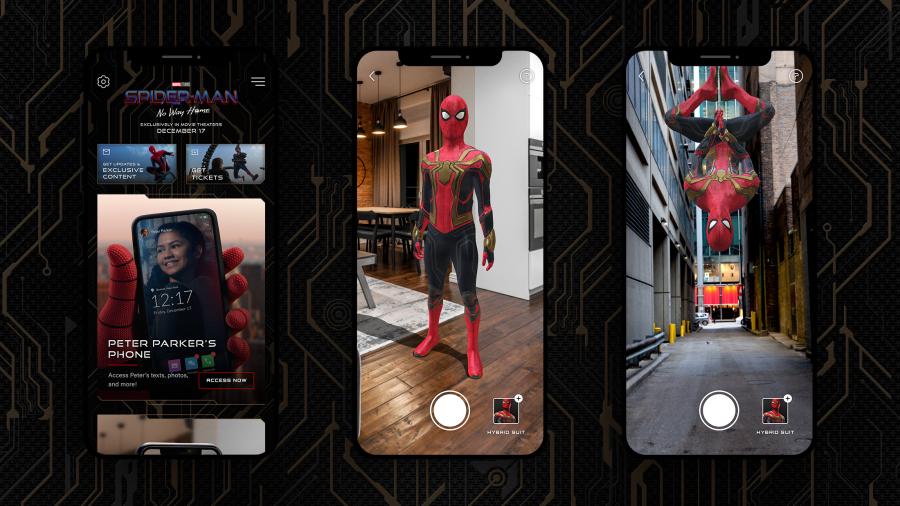Mention virtual or augmented reality to a theme park operator and the first image likely to come to mind is that of park-goers wearing VR goggles on a dark ride or retrofitted coaster. While these rides are cutting-edge, the extended reality (XR) technologies behind them have a wide range of uses outside the turnstiles, particularly in the arena of marketing.
One company at the forefront of extended reality marketing is Los Angeles-based Trigger XR, which has more than 275,000 hours of extended reality development under its belt for clients including Disney Parks, Molson Coors, Lego, and Nickelodeon.
One of the first questions that any company must answer when considering XR marketing is which modality to use: Web AR (scanning a QR code opens a web page, phone camera and augmented reality experience); Social AR (inside apps like TikTok, Snapchat, Instagram, and Facebook); or App-based AR (building or customizing a dedicated app).
IAAPA News Hub contributor Michael Switow caught up with Trigger XR’s founder and CEO Jason Yim for a primer on the pros and cons of each modality. Their conversation has been edited for length and clarity.
How do I choose between Web AR, Social AR, and a dedicated AR app?
Social AR is the simplest choice, because AR lens and effects are built into platforms like Instagram and Facebook. But your target audience must be on that platform. Plus, there are file size constraints, which means that experiences need to be shorter and probably have fewer 3D characters and less detail.
Web AR is a good way to hit as many users as possible; all you need to activate it is a web browser. If the experience has a retail component, you can launch it from a QR code on signage in your store. You can also place QR codes in all your ads.
App-based AR is the least common now, because of the friction involved. You need to get someone to download an app, but the average number of apps that people download and install each month is zero. It’s hard to get people to do something new, so the only time we recommend a dedicated app is when it has a big intellectual property (IP) and people are hungry for that content. It’s difficult to create a new app. But if there is an existing app with an established user base, you might be able to add an AR module into the existing code and expand its capabilities.
Keep in mind, “Who is your audience and what is the lowest friction way to meet them?” For example, if you’re targeting millennials, that’s an easy equation—they’re using Snapchat; build a lens and activate it there.
What are some considerations for Social AR campaigns?
People want to show themselves off on social media. So, if you are developing a Social AR experience, show a person’s face as much as possible, because that’s what they want to see and share.
We worked with Sony Pictures to develop a dedicated app and social media experience called AR Suit Explorer to promote the release of "Spider-Man: No Way Home." One feature that was a triumph with this experience is that you can turn the camera on yourself and try on Spider-Man’s new Integrated Suit, with and without the mask.
And then, thanks to full-body tracking technology, you can point the camera at a friend and their whole body is replaced by Spider-Man. Whatever your friend does — jumping jacks, etc. — Spidey does too.
What is “Smart AR” and how have you used it?
AR gets really exciting when it becomes smart and you can bring in context.
All platforms have similar file size restrictions, so in terms of visual storytelling, they're in a similar place. But each platform has different capabilities. Snapchat, for example, has a large machine-learning artificial intelligence (AI) backend. There are thousands of objects that the camera can recognize and then do something special. If I launch a lens in my living room and it recognizes that I have a couch and table, then it provides a different experience because it knows the objects around me. That feels like magic! Contrast that to just half a year ago when the experience was the same in any location.
We created an Ant-Man lens for Disney's Avengers in Snapchat. If you scan a table and there’s an apple on it, the Snap camera recognizes the apple and can expand it the same way that Ant-Man does!
Creating an AR marketing experience costs tens of thousands of dollars, at a minimum, and can be significantly more expensive than traditional campaigns. Aside from the cool factor, what’s the business case for this approach?
How much do you engage with a banner ad? Even watching a video is a passive experience and doesn’t have the same degree of engagement as being in a 3D space. I serve on the IAB’s (Interactive Advertising Bureau) AR Marketplace Board and we’re working to quantify this difference. We do know, though, that augmented reality leads to staggering conversion rates — 94% higher, according to internal research by Shopify.



